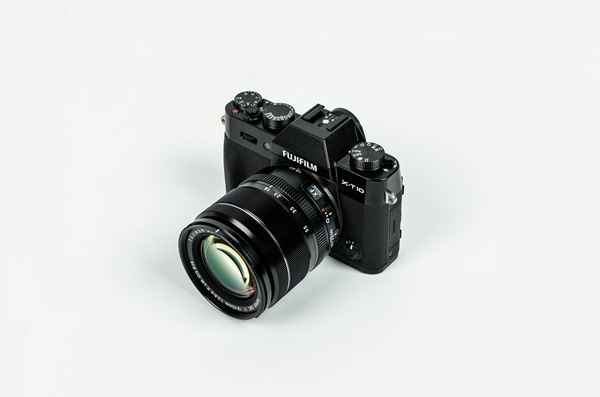The world of photography has witnessed a remarkable evolution, and the choice between mirrorless cameras and DSLRs has become a pivotal decision for photographers. This article will delve deep into the mirrorless vs DSLR comparison, exploring the intricate details and various factors that distinguish these two popular camera types.
I. Mirrorless vs DSLR comparison
The Essence of Mirrorless
Mirrorless cameras are a testament to technological ingenuity. They operate without the optical mirror found in DSLRs, which is replaced by electronic viewfinders or LCD screens. This fundamental difference opens up a world of possibilities.
Advantages of Mirrorless Cameras
Compact in size, they defy the conventions of bulk associated with DSLRs. Silence is their forte, perfect for discreet street photography. Electronic Viewfinders (EVF) provide real-time feedback, and continuous autofocus ensures that the decisive moment is never lost. Additionally, their prowess in videography extends creative boundaries.
Limitations of Mirrorless Cameras
In the world of mirrorless, battery life can be a concern. The need for compactness often results in smaller batteries. Limited lens options may leave some photographers wanting more, and the durability factor may raise questions for rugged outdoor use.

II. Delving into DSLRs
The DSLR Legacy
DSLRs, or Digital Single-Lens Reflex cameras, have held the throne for years. They offer an optical viewfinder that provides an unadulterated view of the scene, cherished by many photographers. A sturdy build, substantial battery life, and a vast selection of lenses contribute to their appeal.
Advantages of DSLRs
Optical viewfinders provide an authentic view of the scene. DSLRs boast impressive battery life, ensuring that you can capture moments for extended periods. Their extensive selection of lenses offers versatility for all photographic needs. Ergonomically designed, they nestle in the hand with comfort.
Limitations of DSLRs
While optical viewfinders are prized, they contribute to the bulk and noise associated with DSLRs. Live view and video autofocus may not match the swift precision of their mirrorless counterparts.
Image Quality Comparison
The pursuit of excellence in photography hinges on image quality. Both mirrorless and DSLR cameras vie for supremacy in this arena.
Sensor Size Matters
Mirrorless cameras have varying sensor sizes, and this impacts low-light performance and dynamic range. DSLRs typically house larger sensors, granting them an advantage in image quality, especially in challenging lighting conditions.
Low Light Performance
In low-light conditions, DSLRs leverage their larger sensors to produce cleaner and less noisy images. Mirrorless cameras, while competent, may exhibit more noise due to smaller sensors.
Image Stabilization
Mirrorless cameras often incorporate in-body image stabilization (IBIS) technology, allowing for steady shots even with non-stabilized lenses. DSLRs rely on lens-based stabilization, which may not be available for all lenses.
Lens Quality
The lens you choose can significantly impact image quality. Both mirrorless and DSLR systems offer high-quality lenses, but the availability of certain lenses may vary.

III. Adaptability and Versatility
A camera is only as good as the lenses and accessories it can accommodate. This section explores how both camera types handle adaptability.
Lens Compatibility
Mirrorless cameras offer adaptability through mount adapters, allowing the use of a vast range of lenses, including vintage glass. However, some autofocus functionalities may be compromised. DSLRs, on the other hand, typically have a wide selection of native lenses.
Accessories and Add-Ons
Accessories like external flashes, microphones, and grips are essential for a complete photography setup. Mirrorless systems, although compact, have a growing ecosystem of accessories. DSLRs have an extensive range of accessories readily available.
Adaptation for Specific Shooting Styles
Each camera type caters to different shooting styles. Mirrorless cameras excel in portability, making them ideal for street, travel, and documentary photography. DSLRs are well-suited for genres where optical viewfinders are crucial, such as wildlife and sports photography.
IV. User Experience
Photography is a blend of art and technology. A seamless user experience is vital for unleashing creativity.
Learning Curve
Both mirrorless and DSLRs have learning curves, but mirrorless systems often offer modern features that can be appealing to newcomers. DSLRs, while traditional, provide a straightforward and intuitive experience.
Handling and Ergonomics
The feel of a camera in hand is integral to the shooting experience. Mirrorless cameras excel in compactness, while DSLRs offer a substantial grip and a familiar button layout.
Customization and Personalization
Customizing camera settings to match your shooting style is an art in itself. Both camera types allow for extensive customization, but the depth of customization may vary between models.
V. Portability and Travel-Friendliness
Photography knows no bounds, and for travelers and adventurers, camera portability is a game-changer.
Size and Weight Considerations
Mirrorless cameras shine in the portability department. They are lighter and more compact, making them ideal for travel, hiking, and street photography. DSLRs, while bulkier, may be worth the trade-off for photographers who demand uncompromising image quality.
Travel Photography with Mirrorless
For travel photographers, mirrorless cameras offer a discreet and lightweight solution. Their compactness ensures ease of movement and minimal intrusion when documenting foreign landscapes and cultures.
Travel Photography with DSLRs
Traveling with a DSLR requires more planning and consideration of equipment. However, the robust build and optical viewfinder can be advantageous for certain travel scenarios, such as wildlife safaris.
VI. Battery Life and Efficiency
Unpredictable moments are the essence of photography, and a reliable battery can make all the difference.
Mirrorless Battery Life
Mirrorless cameras are notorious for consuming battery power, especially when using an electronic viewfinder or shooting video. Carrying spare batteries is often a necessity for extended shooting sessions.
DSLR Battery Life
DSLRs are known for their exceptional battery life, allowing photographers to shoot for extended periods without constant battery swaps. This makes them a preferred choice for events and extended outdoor shoots.
Strategies for Maximizing Battery Efficiency
Photographers can employ various strategies to optimize battery life, such as turning off unnecessary features, using power-saving modes, and carrying spare batteries. DSLR users may need fewer spare batteries due to their inherently efficient power usage.
VII. The Role of Technology
Camera technology is in a perpetual state of evolution. This section explores the technological advancements in both mirrorless and DSLR systems.
Sensor Innovations
Both mirrorless and DSLRs benefit from sensor advancements. Mirrorless cameras often feature the latest sensor technologies, offering high resolution and improved low-light performance.
Autofocus Technologies
Autofocus is a critical aspect of modern photography. Mirrorless cameras, with on-sensor phase-detection and contrast-detection systems, provide swift and accurate autofocus. DSLRs employ phase-detection autofocus, which excels in tracking moving subjects.
Connectivity and Sharing Features
In the digital age, connectivity and sharing are paramount. Mirrorless cameras are designed with seamless connectivity, facilitating quick sharing and remote control via smartphones. DSLRs are catching up with Wi-Fi and Bluetooth features, enabling more efficient workflow.
VIII. Videography Capabilities
The fusion of photography and videography has become the norm. Both camera types have their strengths in the world of moving images.
Mirrorless Cameras for Video
Mirrorless cameras are favored by videographers for their compactness, silent operation, and advanced video features. They can shoot in high-resolution formats and offer extensive control over video settings.
DSLRs in Filmmaking
DSLRs, while originally designed for photography, have found their place in filmmaking. Their optical viewfinders and large sensors create cinematic visuals. However, the lack of advanced video features and autofocus limitations may pose challenges.
Hybrid Cameras for Both Photo and Video
Some camera models, whether mirrorless or DSLR, are designed to excel in both photography and videography. These hybrids offer a balanced approach for creators who dabble in both worlds.
IX. Cost Considerations
Investing in photography is a significant decision, and understanding the costs involved is crucial.
Initial Investment
Mirrorless cameras come in a range of price points, offering budget-friendly options to professional-grade models. DSLRs, while competitive, may require a higher initial investment for similar performance and quality.
Ongoing Costs
Consider ongoing costs, including lenses, accessories, and maintenance. Mirrorless and DSLR lenses may vary in price, and the cost of accessories should also be factored into the equation.
Value for Money
The value for money ultimately depends on your specific needs and budget. It’s essential to weigh the initial investment against the long-term costs and the creative opportunities each system provides.
X. The Influence of Mirrorless on DSLR Development
The competition between mirrorless and DSLRs has ignited innovation in both camps. This section explores how one technology influences the other.
The Competitive Landscape
The fierce competition between mirrorless and DSLRs has accelerated technological advancements in both categories. Manufacturers strive to outdo each other in features, performance, and design.
Innovations in DSLR Technology
To remain relevant, DSLR manufacturers have incorporated mirrorless-inspired features, such as live-view shooting and improved video capabilities. DSLRs continue to evolve while preserving their optical viewfinder legacy.
Potential Future Directions
The convergence of technology may lead to cameras that bridge the gap between mirrorless and DSLRs, offering photographers the best of both worlds. The future promises exciting possibilities for image creators.
XI. Industry Trends
The photography industry is dynamic, and understanding current trends is essential for photographers.
Market Shift Towards Mirrorless
The industry has witnessed a significant shift towards mirrorless systems, driven by their compactness, advanced features, and evolving lens ecosystems. Mirrorless cameras are increasingly becoming the preferred choice for both enthusiasts and professionals.
DSLRs for Niche Markets
While mirrorless cameras dominate the general market, DSLRs maintain a presence in niche markets. Photographers specializing in wildlife, sports, or specific genres continue to rely on the unique features of DSLRs.
Second-Hand Market Dynamics
As photographers transition to newer technology, the second-hand market for DSLRs and mirrorless cameras flourishes. This presents opportunities for budget-conscious enthusiasts to acquire high-quality equipment.

XII. Personal Preferences and Shooting Style
Photography is an art form, and personal preferences play a significant role in the choice between mirrorless and DSLRs.
Photographer’s Needs and Preferences
Consider your individual needs, shooting style, and artistic goals. Are you drawn to the compactness of mirrorless or the optical viewfinder of DSLRs? Your preferences should guide your choice.
Specialized Photography Genres
Certain genres demand specific camera attributes. Portrait photographers may prefer the optical viewfinder, while street photographers might favor the discreetness of mirrorless. Choose the tool that aligns with your photographic ambitions.
Hybrid Approach
Some photographers adopt a hybrid approach, using both mirrorless and DSLRs to leverage the strengths of each system. This flexibility allows for creativity across a spectrum of photographic scenarios.
XIII. Environmental Impact
As sustainability gains prominence, it’s important to consider the environmental impact of your camera choice.
Mirrorless and Sustainability
Mirrorless cameras tend to be more energy-efficient and have a smaller carbon footprint due to their compact size and lower power consumption.
Recycling and Disposal
When it’s time to part with your camera, consider recycling or proper disposal to minimize electronic waste. Many manufacturers and organizations offer recycling programs.
Ethical Considerations
Beyond the environmental impact, consider the ethical practices of camera manufacturers, such as labor conditions and supply chain transparency. Support companies that align with your ethical values.
XIV. The Role of Photography Education
Education is the foundation of photographic growth. How do mirrorless and DSLRs fit into the realm of photography education?
Training with Mirrorless
Photography schools and workshops increasingly incorporate mirrorless systems into their curriculum. These cameras provide students with a modern and versatile learning experience.
Traditional Education with DSLRs
Traditional photography education often centers around DSLRs due to their established presence in the industry. This heritage offers a solid foundation for aspiring photographers.
Adapting to Technological Changes
The photography education landscape is evolving to keep pace with technological advancements. Educators strive to provide a balanced understanding of both mirrorless and DSLR systems, preparing students for the diverse world of photography.
Future Predictions
The future of photography is ripe with possibilities, and predicting the path ahead is a thrilling endeavor.
Technological Advancements
The continual development of sensor technology, autofocus systems, and connectivity features will shape the future of both mirrorless and DSLRs. Expect more innovations and improvements.
Market Dominance
The ongoing battle for market dominance will continue. The trajectory favors mirrorless, but DSLRs will maintain a presence, especially in specialized niches.
The Coexistence of Mirrorless and DSLRs
Photography is a diverse art form, and both mirrorless and DSLRs will coexist, catering to the varied needs of photographers. The choice between them will be guided by individual preferences and the creative demands of each photographic endeavor.
Conclusion
In the realm of photography, the choice between mirrorless cameras and DSLRs is a personal one, shaped by individual preferences, artistic aspirations, and practical considerations. It’s a decision that defines your photographic journey and the memories you capture. The future holds exciting possibilities for both technologies, ensuring that the art of photography continues to thrive.

